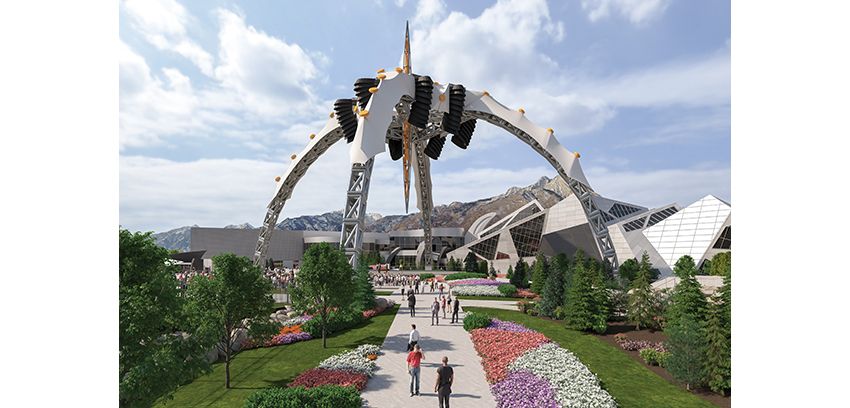A Sneak Peek of Loveland Living Planet Aquarium’s Exciting Future
This article was published in the Fall 2019 issue
by Jarreau Smith
Loveland Living Planet Aquarium (LLPA) in Draper, UT, is creating a community gathering space like no other. The Aquarium recently broke ground on a Science Learning Campus, with U2’s famous stage known as the Claw as the centerpiece.
This all began back in 1997, when Aquarium Founder and CEO Brent Andersen started pursuing his dream of building a world class aquarium in Utah. Indeed, how does one bring the ocean to the desert? In 1999, beginning small, the “Aqua Van” began visiting Utah elementary schools with ocean animals and educating children of all ages. Fast-forward to 2014. With the help of hundreds of donors and a dedicated and talented team, Brent’s initial dream came true: a world-class Aquarium opened in Draper, and continues to draw nearly one million guests a year.
Today, Loveland Living Planet Aquarium is a 136,000 sq. ft. destination just west of I-15 at 12300 South. An additional nine acres was acquired to construct an outdoor plaza for special events, new interactive exhibits and science themed play areas, a 90,000-square-foot Science Learning Center, and an Eco Command Center that provides ecology-themed, interactive experiences.
Located beneath The Claw, now named “EECO” (Ecosystem Exploration Craft & Observatory), the Command Center will use Virtual Reality technology and extensive digital content to send guests on ‘eco-missions’ around the globe.
“What we are creating is much more than an Aquarium,” said Andersen.
The thematic VR experience will teach millions of guests about our planet.
“The size and scale of EECO and indeed our entire campus is going to be incredible. Our mission is to inspire people to explore, discover, and learn about Earth’s diverse ecosystems, and we help guests understand that all of our planet's ecosystems are interconnected as just one global ecosystem, the Living Planet,” said Andersen.
Adapting U2’s famous 200 ton steel stage from their 360° world tour to become a permanent installation was a daunting challenge. The Aquarium worked with local and international engineers and the teams from England and Belgium who first designed and built it to convert it to become a permanent structure.
EECO is representative of the worldwide effort to reduce, reuse, and recycle. According to the World Steel Association, each ton of steel produced in 2017 created an average of 1.9 tons of carbon emissions. By reusing this structure instead of building a new one, the Aquarium is preventing nearly 700,000 pounds of CO2 from entering the atmosphere – that’s the equivalent of conserving 37,500 gallons of gasoline emissions. With EECO, the Aquarium is creatively recycling a renowned concert stage into a multi-functional marvel and landmark of the Salt Lake Valley.
To accompany the outdoor plaza, the Aquarium’s expansion includes a Science Learning Center. An invaluable resource for local schools and scientists, the Center will house exciting new facilities including:
- An Asian Cloud Forest Habitat & Endangered Species Conservation Center
- High-tech laboratories
- Immersive classrooms
- A Science Entrepreneur Incubator
- Banquet and conference center
- Interactive science stations
The Science Learning Center will be a community resource that benefits K-12 and university students. In addition, it will benefit local startups and nonprofits focused on researching and developing sustainable technology and conservation, as well as Aquarium members and guests from around the world. The Science Learning Center will enable Loveland Living Planet Aquarium will vastly increase the scope and reach of their mission.
Loveland Living Planet Aquarium, as a completed campus of science and learning, will stand for years to come and draw guests from around the world. For those interested in learning how they can help support this effort, visit Expansion.TheLivingPlanet.com. For naming and sponsorship opportunities, contact development@thelivingplanet.com.
Read the rest of the articles in the Fall 2019 issue of Silicon Slopes Magazine


